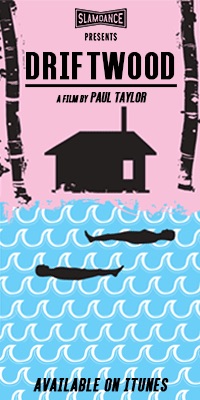There may be no better way of expertly combining the feel-good memories of childhood and the terrifying advent of dealing with the adult world than Clyde Petersen’s Torrey Pines. For starters, it’s an animated film, which in most instances signal a more kid-oriented theme. But it’s not traditional drawn animation nor is it CGI. Instead, it’s old-fashioned stop-motion animation, the kind that uses paper cutouts and multi-media collage to bring things to life. Less sophisticated versions of this technique have shown up on shows like Sesame Street, usually for such exercises as extolling the virtues of the letter “S” or perhaps to explain why a walk in the park feels so good. But Petersen uses this charming and warm montage to tell a story of a high school girl dealing with a schizophrenic mother and a kind-of inadvertent kidnapping gone wrong. What superficially seems like a cutesy and gleeful coming of age story reflects a fresh take on the pains of growing up and becoming oneself in one’s own terms.

TORREY PINES
There is virtually no dialogue in the film. But there is plenty of guttural sounds and mumbling which does a terrific job at communicating emotions when paired with the rudimentary expressions of emotion which paper cutouts can emote. A boring teacher, recalling the famous Ferris Bueller’s Day Off scene (“Anyone? Anyone”), a disinterested teenager, a rambling and possibly psychotic adult – all of these things are transmitted as effectively through grunts and moans as the most eloquent of monologues could to the viewer, thanks to Petersen’s tender loving care over every moment of the film. The story is easy to follow, the visual language is visceral, and the technique disarmingly effective.

Animation that “lives long and prospers”…
But then there are these sublime moments. Dreams, daydreams, romps through nature, and strolls through coastal town streets become mesmerizing and almost psychedelic, as if channeling a bygone idea of what childlike sublimity looks like. The whole retro feel is reinforced by its focus on pop culture. The main character watches Star Trek, views movies on a VCR and a friend wears a Nirvana t-shirt. It’s a look back at the past simultaneously seen through rose-colored glasses and the perspective of a filmmaker whose had time to understand where they came from. Some moments go further, into the surreal, with certain sequences paradoxically making the viewer border on squeamishness, even though the whole feel of the work is 100% arts & crafty.

TORREY PINES
And there is craftiness. Petersen is telling us something we all know, but don’t want to admit to ourselves: our pleasant memories are easily deconstructed into impactful trauma, and not even the warm fuzzies of crayons and construction paper can hide the truth from a person honest with themselves. The narrative is closely based on Petersen’s life, and must have at times been very painful to create. For the viewer, the superficial sweetening is both a joy to behold and a warning to the audience to not take things at face value. The truth is that our pasts are an amalgam of pain and happiness, of discovery and betrayal, of lost youth and endless curiosity. The unique pastiche offered here brings a colorful side to the reckoning of a tough personal history in an ingenious and touching new way. Take both yourself and your inner child to go see the film.








READER COMMENTS